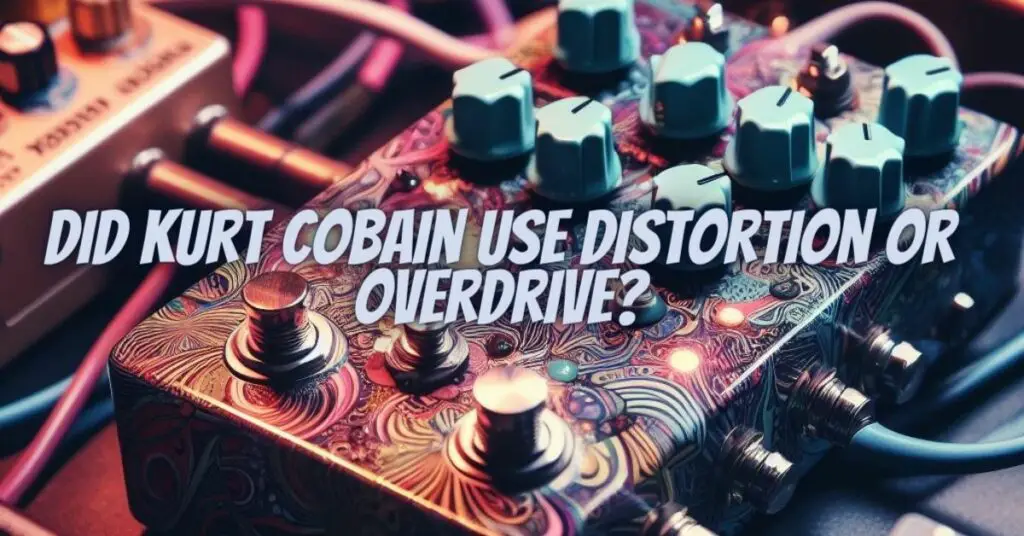Kurt Cobain, the iconic frontman of Nirvana, left an indelible mark on the world of rock music with his signature gritty and rebellious sound. The debate about whether Cobain primarily used distortion or overdrive to achieve his legendary tone has long intrigued guitarists and fans alike. In this article, we’ll delve into the gear and techniques Kurt Cobain employed to shed light on the eternal question: Did he use distortion or overdrive?
The Cobain Sound: A Raw and Distorted Edge
Kurt Cobain’s guitar tone is celebrated for its raw, powerful, and unmistakably distorted quality. The sound of Nirvana, especially on their groundbreaking album “Nevermind,” is characterized by aggressive guitar riffs and searing solos.
The Distortion Argument
- Boss DS-1 Distortion: Cobain is famously associated with the Boss DS-1 Distortion pedal. This pedal is known for producing an aggressive, high-gain distortion that saturates the guitar signal and creates a pronounced, sustaining, and edgy sound. The DS-1 played a pivotal role in crafting Cobain’s distinctive grunge tone.
- Heavy Use of Gain: Cobain dialed in a significant amount of gain on his DS-1, pushing the pedal to its limits. This resulted in a heavily distorted sound, further emphasizing the distortion argument.
The Overdrive Argument
- ProCo Rat Overdrive: In addition to the DS-1, Kurt Cobain was known to use the ProCo Rat distortion/overdrive pedal. The Rat is distinct from typical distortion pedals in that it introduces an overdrive-like quality. It retains the core character of the guitar and amp while adding a layer of harmonically rich overdrive.
- Sonic Dynamics: Cobain’s playing style and dynamics contributed significantly to his sound. His aggressive strumming and pick attack, coupled with the overdrive properties of the Rat, created a unique and harmonically rich tone.
The Verdict: A Fusion of Distortion and Overdrive
While the debate between distortion and overdrive rages on, it’s clear that Kurt Cobain’s sound was a fusion of both. He used the Boss DS-1 Distortion pedal to introduce the pronounced, sustaining distortion that defined his signature sound. However, his use of the ProCo Rat overdrive added a layer of overdrive-like harmonics that contributed to the complexity of his tone.
Cobain’s distinct playing style, which included heavy strumming and dynamics, was equally crucial in shaping his sound. He had a knack for manipulating his equipment to create a unique blend of distortion and overdrive that defied conventional categorization.
In the end, the debate over whether Kurt Cobain used distortion or overdrive is somewhat inconclusive. The magic of his sound lies in the fusion of these two effects, along with his unique approach to playing the guitar. Cobain’s legacy lives on, not only in the timeless music of Nirvana but also in the ongoing fascination with his one-of-a-kind sonic signature. Whether it’s the result of distortion, overdrive, or a bit of both, his sound continues to inspire countless musicians and remains an enduring part of rock history.


